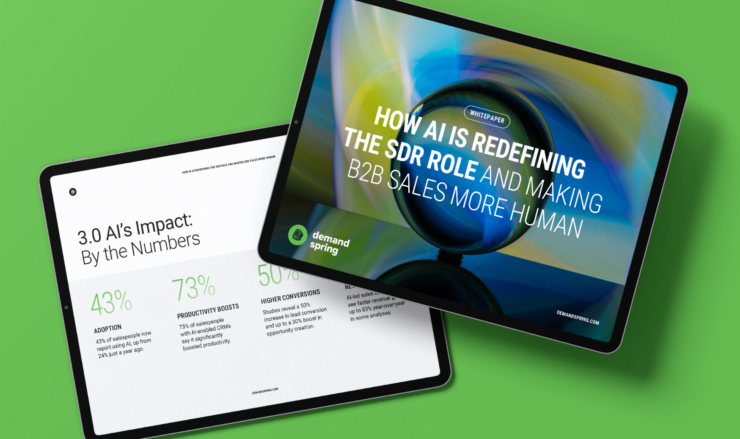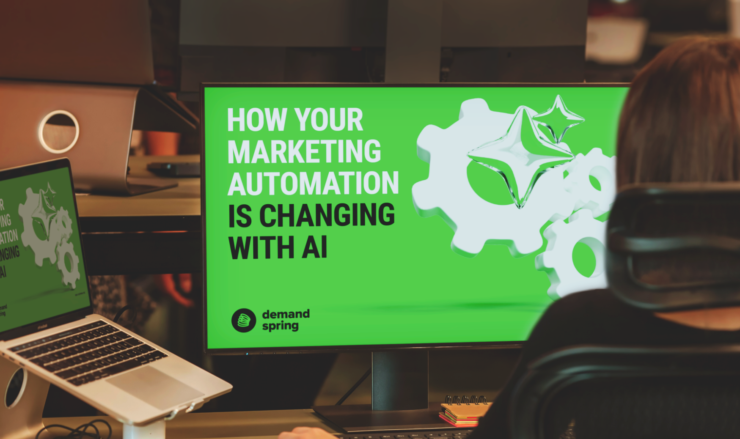Cookies have long been a secret ingredient for marketers in understanding their audience, but as we inch closer to 2024, this tracking cornerstone is crumbling away. Google’s Chrome browser is at the head of this deprecation. The company will start disabling third-party cookie tracking for 1% of users in Q1. It’s aiming for a full phase-out by the latter half of 2024. These tiny data packets have long represented a huge portion of the backbone of targeted advertising, analytics, and customer segmentation in B2B marketing. The transition away from them sparks questions about how to best fill or adjust those roles going forward. So, how do you optimize your B2B marketing without cookies?
This post is designed to present a guide to navigating this transition. We’ll explore some actionable strategies, both old and new, that not only can adapt your practices to the absence of cookies but aim to optimize and elevate your B2B marketing game overall.
First-Party Data
As I have written about in the past, personalization is a powerful tool for marketers. But, as third-party cookies phase out, a first-party data strategy is critical to help you optimize your B2B marketing without cookies. Sourced directly from users, first-party data is more reliable and will maintain longer-term compliance with emerging privacy regulations. The real advantage of first-party data, however, comes when you use it to build more personalized and consent-driven marketing engagements.
This increased targeting is more easily achievable with first-party data as you determine the most valuable data to collect. You can then use them to create customer profiles, for more precise targeting. Not sure which types of data to collect initially? Contact information, website analytics, behavioral data, and transactional data are highly effective for broadly gauging customer interest and engagement.
Data sourced from interaction with posted content, such as views and likes or prompted feedback from polls and surveys, can serve as an organic means of determining what topics resonate most. Of course, each business can vary in the value they derive from a specific type or source. Over time it can pay to gather first-party data from many sources, and then to identify and focus on the collection areas that you see yielding the most relevant information.
One challenge first-party data presents is the increased difficulty involved in obtaining it. Given the varying types of first-party data to collect, there are a number of strategies at hand. For one, it’s worth recalling that first-party cookies and tracking pixels are still available for use. They can be leveraged to collect behavioral data, from basics like page views and click paths to advanced information like user ids and location data. Visitor consent, of course, must be provided.
Compelling Content is Essential
An increased push on creating compelling content and interactive experiences with clients can go a long way. Webinars, eBooks, interactive polls and quizzes not only add value but also serve as a natural avenue for data collection. Engagement with this content serves as valuable first-party information in its own right. And it can drive users toward your website, content-gates, and emails, enabling you to gather different types of first-party information.
Finally, a well managed CRM implementation or similar analytics or CDP platform can be helpful. They can store information such as interaction and transactional data to generate insights that can be used to further refine campaigns. Again, it can be worth employing multiple of these strategies initially if your use of first-party data is new. Not only do they pose different levels of value, but also share a synergistic relationship with one another, with one strategy often boosting the output of others when implemented in tandem.
Leveraging Partnerships
Partnerships and co-marketing can make for an impactful extension of these efforts, adding further credibility and reaching a wider audience. In fact, partnerships as a whole can present far more value in a world without third-party cookies. Not only do they expand your business’s marketing network, but oftentimes partners can reveal further insights about a business or industry, share specialized resources, and increase customer-service offerings. All of these benefits make an extra impact with the increasing reliance on first-party data and account-based marketing, and thus are becoming more worthy of active consideration.
Creating effective partnerships can take time, so now is a good time to begin considering partner outreach if you haven’t already. Consider the objectives you have with partners and how snugly specific partnership opportunities can align with them. An objective-oriented approach can lead to far more fruitful relationships.
Implementing Artificial Intelligence
To the extent that third-party cookies are disappearing, another potential asset emerges in AI. It’s conveniently complementary to the points of first-party data and partnerships we’ve discussed. AI excels in automating routine tasks and thus can play a huge role in bettering the use of analytics.
Lead generation and prospecting can be sped up a great deal from implementing AI tools. AI’s ability to identify additional customer insights can drive greater campaign engagement and conversion. It makes for a great way to better customize account-based marketing approaches from first-party data that’s otherwise difficult to determine use from, and the integration of AI in many marketing platforms and services opens room for further partnership opportunities.
Altogether, between an increased utilization and collection of first-party data along with establishing synergistic partnerships and AI platforms in the process, a cookie-free approach to B2B marketing becomes not-so-unattainable. It’s worth remembering that these adjustments are not just stopgap measures either. The more holistic and privacy-considerate approach to gathering and utilizing data can pay dividends down the line as you earn more customer trust.
By acting now in considering and applying new measures to get around a world without third-party cookies, your organization can take a much firmer hold on the shape of your marketing posture to come. You can also use these strategies to gain competitive advantage. In a world where others will surely lag, leveraging these strategies to help you optimize your B2B marketing without cookies will help you stand out.




